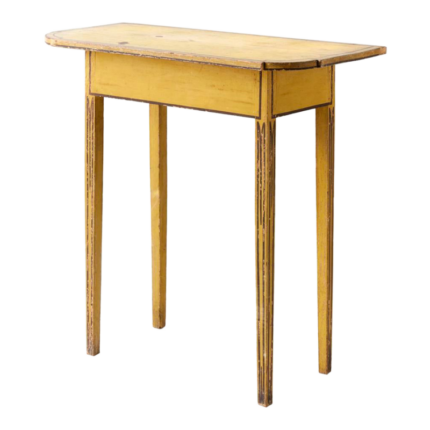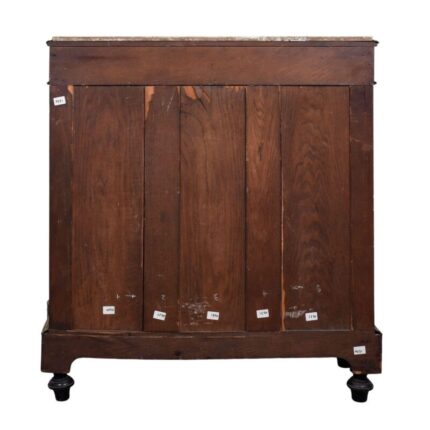With a spurious Jacob stamp to back rail.
The term “Directoire” refers to a historical period following the French Revolution (1789) and preceding the First Empire when Napoleon reigned, but also to a style of furniture and decoration covering a longer period from 1789 to 1804. It is characterized by the production of furniture with simplified forms and ornaments, inspired by antique decorations.
The profound social and political upheavals that marked this period had a direct impact on the production of Directoire furniture. The stripping down of furniture pieces, which had begun in the 1780s under the influence of Greek art, was accentuated during this period. The abolition of guilds by the revolutionaries also forced manufacturers in the Faubourg Saint-Antoine to simplify shapes and materials.
Elegant and graceful, the furniture is generally small-scale. They retain the Louis XVI structure. The Directoire style adopts clean shapes, straight lines, simple curves, flat surfaces and right angles. Lines accentuate geometric shapes inspired by Antiquity. A typical trait is the pronounced rolled-over back, similar to a scroll illustrated in our bergere, evocative of the klismos chair. Only the more luxurious pieces of furniture use mahogany, an exotic and expensive wood.
Despite his humble origins, Georges Jacob rose to become one of the most renowned menuisiers of his day. Unlike many artisans who joined their fathers or brothers in the middle-class family trade of furniture making, Jacob was from a peasant family and moved to Paris at sixteen to begin his career. He apprenticed in a joinery workshop and eventually became a master in 1765. He developed a reputation for producing inventive designs for chairs, beds, and screens carved with such motifs as twisted ribbons, guilloches, beading, and fluting.
Jacob’s reputation grew quickly, eventually spreading outside France; the future King George IV of England, Gustavus III of Sweden, and several German princes all ordered furniture from him. During the French Revolution, his debts mounted as several of his French clients fled the country or were executed. Despite his aristocratic business connections, which would have provoked suspicion from the revolutionary government, Jacob’s friendship with the painter Jacques-Louis David helped him to avoid imprisonment, and he became one of the main suppliers of furniture to the revolutionary government and later to Emperor Napoleon.
Jacob retired in 1796, turning his business over to his two sons. When the older son died, Jacob returned to work and watched the firm become one of the most important of the period, supplying pieces to many wealthy residences and employing more than three hundred workmen.
-
Attributed to:Georges Jacob (Maker)
-
Dimensions:Height: 37 in (93.98 cm)Width: 27 in (68.58 cm)Depth: 32 in (81.28 cm)
-
Style:Directoire(Of the Period)
-
Materials and Techniques:Mahogany
-
Place of Origin:France
-
Period:Late 18th Century
-
Date of Manufacture:Late 18th Century
-
Condition:GoodWear consistent with age and use. Minor chips and scratches. While not new, the upholstery is in good condition. Ready to place.
-
Seller Location:Kittery Point, ME
-
Reference Number:Seller: 2236Seller: LU837635067212




































Reviews
There are no reviews yet.